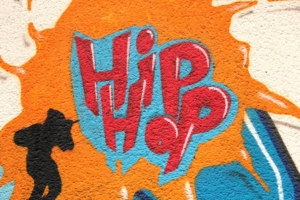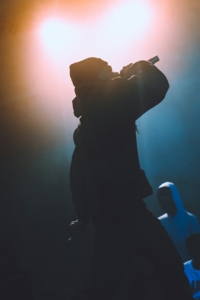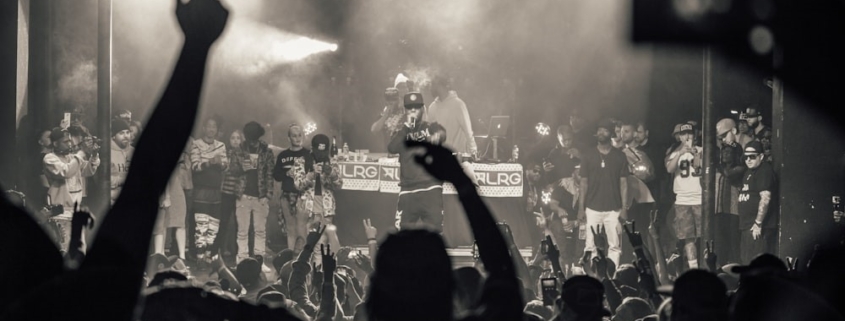“How Hip-Hop Can Save the World” – Part 1: Equality
This is the first of three articles in the series How Hip-Hop Can Save the World by Khodi Dill. This edition focuses on hip-hop’s potential to uplift equality.
When many folks think about hip-hop, they think solely about rap music. Others think about a style of dance taught alongside tap, jazz, and lyrical at myriad studios the world over. But true hip-hop heads know that hip-hop is much more expansive than any single art form. Hip-hop is a culture, diverse in its expressions, global in its reach, and infinite in its potential to inspire and generate equity within our fragmented society. Since human inequality poses one of the greatest social problems plaguing the earth today, hip-hop may just help save the world.
The culture of hip-hop is known to have at least four basic pillars. They are: emceeing, which most associate with rapping over a beat; breakin’ – an emphatic and semi-acrobatic style of dance that’s often performed in direct competition with others; turntablism or DJing; and, of course, graffiti – the edgy visual art form that is loved and hated for its ability to shock and sometimes move people in all manner of surprise locations. Whether you find yourself on the love or hate side of this spectrum, one can’t argue that within this broad scope of hip-hop culture, there is something for everyone. That’s precisely why academics like Christopher Emdin have argued that hip-hop ought to have a greater presence within school classrooms; for inherent to the culture is a recognition of diversity and an honouring of the unique strengths of individuals, making hip-hop an equitable educational tool and art form. And of course, it’s not just an art form, and perhaps not even “just a culture.” Hip-hop is a mentality, and an anti-oppressive one at that.
 Hip-hop’s origins can be traced to the African-American community going back to the early 1970s (last year, hip-hop celebrated its 50th anniversary). Many see a house party thrown by DJ Kool Herc on August 11, 1973 as hip-hop’s literal birthplace. On that night, Herc was throwing a back-to-school party for his sister, Cindy, and used an innovative fading technique to extend the instrumental breaks on the records he was playing. People at the party danced furiously to these breaks – the beginnings of breakdancing – and DJ Kool Herc spoke emphatically into the microphone like an enthusiastic MC to encourage them. Hence, “emceeing” was born, too. Herc had charged admission to this party (25 cents for women and 50 cents for men), and gave the proceeds to his sister so that she could buy back-to-school clothes. This, a small but powerful act of resistance against what author Jeff Chang called “the politics of abandonment” under which Herc and his family, and many other Black Americans grew up. Hip-hop was born as an act of resistance, as a determined stride toward success in the face of adversity, of racialized poverty, and it has never lost that zeal.
Hip-hop’s origins can be traced to the African-American community going back to the early 1970s (last year, hip-hop celebrated its 50th anniversary). Many see a house party thrown by DJ Kool Herc on August 11, 1973 as hip-hop’s literal birthplace. On that night, Herc was throwing a back-to-school party for his sister, Cindy, and used an innovative fading technique to extend the instrumental breaks on the records he was playing. People at the party danced furiously to these breaks – the beginnings of breakdancing – and DJ Kool Herc spoke emphatically into the microphone like an enthusiastic MC to encourage them. Hence, “emceeing” was born, too. Herc had charged admission to this party (25 cents for women and 50 cents for men), and gave the proceeds to his sister so that she could buy back-to-school clothes. This, a small but powerful act of resistance against what author Jeff Chang called “the politics of abandonment” under which Herc and his family, and many other Black Americans grew up. Hip-hop was born as an act of resistance, as a determined stride toward success in the face of adversity, of racialized poverty, and it has never lost that zeal.
 One of the most equitable elements of hip-hop is its accessibility. One requires nothing but a voice in order to participate, and not even that is a complete necessity. Anyone, and I mean anyone can take part in a hip-hop cypher circle (cyphers are circles of artists gathered for the purpose of sharing their art communally), no matter what your talent, or talent level, might be. You can clap, you can beatbox, you can sing, hum, or, yes, if you’re really down, you can rap! These are the ways that hip-hop heads generate synergy within the circle, by symbiotically supporting each other, and rappers in the circle take turns to share their off-the-cuff verses in a truly egalitarian process.
One of the most equitable elements of hip-hop is its accessibility. One requires nothing but a voice in order to participate, and not even that is a complete necessity. Anyone, and I mean anyone can take part in a hip-hop cypher circle (cyphers are circles of artists gathered for the purpose of sharing their art communally), no matter what your talent, or talent level, might be. You can clap, you can beatbox, you can sing, hum, or, yes, if you’re really down, you can rap! These are the ways that hip-hop heads generate synergy within the circle, by symbiotically supporting each other, and rappers in the circle take turns to share their off-the-cuff verses in a truly egalitarian process.
Some people are put off by the perceived negative energy of rap battles and beefs, such as the high profile and admittedly ugly one that’s recently flared up between artists Kendrick Lamar and Drake, but one can’t point to these once-in-a-blue-moon battles as proof that the whole of hip-hop is antagonistic or hateful. No doubt, most rappers embrace the competitive element of hip-hop as a friendly way to motivate each other and increase each other’s talent and emotional resilience, a trait sorely needed by Black artists living amid the world’s many layers of racism and adveristy. But the truth is, when one looks at what it is that most rappers are really beefing with, it’s not each other at all; rather they are most often beefing with an oppressive system in their music and shedding light on social problems with the aim of transforming them (take the late great Tupac Shakur’s Changes for example).
So very many social change anthems have come to us via hip-hop. From 1982’s The Message by Grandmaster Flash and the Furious Five to Mackelmore’s 2024 release Hind’s Hall, history is full of these important songs comprising rap’s most important battle of all – the battle against oppression in its many forms. Poverty and racism are often front and centre as formidable targets, as in Lil Baby’s Black Lives Matter track The Bigger Picture, but for all of the misogyny that exists within rap (as it does across most musical genres), notable artists like Lauryn Hill, Rapsody, Sa-Roc, Eve, and others bring their own brand of feminism to bear upon the industry and its listeners. As something of a pioneer in this regard, Queen Latifah inspired a whole generation of young women emcees with her 1989 hit Ladies First, on which she unapologetically declared that the ladies would be taking up space on the microphone, too, and bringing their own important message to the masses. Through the work of artists like Latifah, today, the mic is open for emcees of all identities to take centre stage.
With its many powerful pillars, hip-hop is holistic, creating equal space for people of all talents and backgrounds to take part in this incredible culture and its mentality of resistance. It was born out of protest, at a literal party for change, and continues to embody this energy in the face of the world’s most pressing social challenges. Within hip-hop’s ranks, artists put their hearts and souls into telling the stories of their struggles, and calling for change in the face of poverty, racism, and sexism, and to ring the alarm about unjust wars. Artists have always been at the forefront of social change, and hip-hop artists are no different. As Dr. Bettina Love points out about anti-oppressive artists like those in hip-hop, they create “soundscapes for all to enjoy (but which only those in the struggle can feel and heal from).” It is the joy of hip-hop that gives us relief from the pangs of inequality, and it is the healing it provides that gives us the strength we need to go on in our fight – to save ourselves, save each other, and to save the world, too.
– KD
Other sources not embedded:

